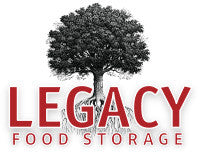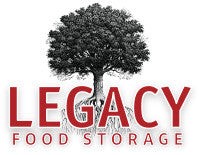
Double Your Harvest with Fall Gardening
So, you’ve been tending your spring and summer gardens carefully and have been loving reaping the rewards. Or, maybe you missed the boat for one reason or another and are still hankering to try your hand at growing this year. Whatever your reason is, August is the perfect time of year to start planning your fall garden. Spring is typically the time that people think of when it comes to gardening. But many people are missing out on another harvest or two by discounting fall!
There are tons of seeds that thrive in the late summer and fall weather. It is all about knowing what plant to plant! This time of year is perfect because it’s warm enough to plant and germinate seeds outdoors, but it will soon be cool enough to avoid heat-related plant troubles. In this article, we will deep dive into why a Fall garden is so beneficial, how to prep a Fall garden, and what to plant. Let’s go!
Understanding the Timing of a Fall Garden
The biggest thing you need to understand when planning a Fall garden is your first expected frost date. You will count backwards from that date to determine approximately how much time you have left to garden. Every seed packet should have the “days to maturity” listed (sometimes called DTM). You will reference this number when determining what to plant and when. I like to use the Farmer’s Almanac for this information.
For example, I live in Southwest Michigan, and our average fall frost date is usually around October 5th. But I know from living here for 20 years that we usually don’t get our first hard frost or snow until late October or early November. So, by the end of August, I know I have something like six to nine weeks to plant and harvest a fall garden. That comes out to 42 to 63 days.
Okay, now I have my magic number! So, anything I plant should have days to maturity (DTM) of around 60 days or less, OR have frost tolerance listed as an attribute. This might not seem like a lot of time, but trust me, there’s a lot we can do here! Sure, you likely won’t be growing another crop of squash or tomatoes (unless you live in zones 9-11), but we have a lot of other options.
Preparing Your Garden for Fall Planting
Before we start planting fall crops, there is a little bit of maintenance we should complete to make things easier. Clear out any summer crops that have passed their prime to make space. Add fresh compost or fertilizer to replenish nutrients that the summer crops took up. Lightly till or break up the soil to make sure no compaction has resulted over the summer. Obtain enough mulch to apply a thick layer around your fall crops. You can put a light layer down now to protect the soil, but you will want to have a 2-3 inch layer ready to go for keeping the roots warmer once your fall plants have developed a bit and before any frost sets in.
What Can I Plant in a Fall Garden?
The three big categories I like to highlight when planning any fall garden are cool-season vegetables, herbs, and fast-maturing crops. Anything that falls into one of these three categories is likely a great choice for fall gardening. Below is an incomplete list of plants that fit into these categories.
-
Cool-Season Vegetables: Lettuce, Spinach, Kale, Swiss Chard, Arugula, Broccoli, Cauliflower, Cabbage, Brussels Sprouts, Carrots, Beets, Turnips, Garlic (harvested next summer), and Green Onions.
-
Herbs: Parsley, Cilantro, Dill, Chives, Thyme, Rosemary, Oregano
-
Fast Maturing Crops: Radishes (these take 30 days or less!), Baby greens, fast-growing beans, and some varieties of summer squash. Also, keep an eye out for “early maturing” varieties of any other plant. For example, peppers typically need a long, hot summer, but some varieties reach maturity in 45-60 days or so!
Tips for Success
When planting for fall, decide whether to direct sow seeds or use transplants. Fast growers like radishes and spinach often do best sown directly in the soil, while slower crops like broccoli or cauliflower may benefit from starting as transplants (you can start these from seeds inside!).
Cooler weather means your soil will stay moist longer, so you won’t need to water as often. Just keep it consistent and avoid soggy conditions. If you want to stretch your season, simple tools like row covers or cold frames can help protect plants from chilly nights.
Even a sudden early frost doesn’t have to spell disaster; light coverings like old sheets or frost blankets can save your harvest. As autumn progresses, keep an eye on your crops for signs they’re ready to harvest. Greens should be tender and vibrant, while root vegetables should be firm and full-sized. A light frost can even sweeten certain vegetables, like carrots and kale. To keep fresh produce coming, stagger your plantings so everything doesn’t ripen at once.
Parting Wisdom
My last bit of parting wisdom is to check in with your local extension office if you’re new to growing in your area. They often have a very informative website or even volunteers who can steer you in the right direction! No matter what zone you are in, there are things you can do to have a fall harvest, maybe even one more productive than you could have imagined! Happy Growing!
About This Expert:
Lara Wadsworth is a freelance horticulture writer with a Bachelor's degree in Horticulture and over three years of experience creating engaging content about gardening and plant care. As a wife, mom, and dog lover, Lara understands the importance of balancing a busy life with a thriving garden. She values practical advice and effective strategies that empower beginners and experienced gardeners alike to grow with confidence. Through her writing, she aims to inspire others to enjoy the rewards of gardening, no matter their skill level.
Tags
- All
- 25 year food
- 25 year shelf life food
- 72 hour kit
- Best food storage types
- Best long-term food storage
- Blizzard preparedness
- Budgeting
- canning
- Certified GMO-free Emergency foods
- Certified GMO-free foods
- Coffee
- Comparison of emergency food methods
- Composting tips
- Dangers of genetically modified foods
- dehydrated food
- Edible Wild Plants
- emergcy preparedness
- Emergency Cooking
- Emergency Food
- Emergency food Christmas gifts
- emergency food storage
- Emergency Food Supply
- Emergency food supply recommendations
- Emergency Planning
- Emergency Preparedness
- Emergency preparedness advice
- emergency preparednesss
- Emergency Supplies
- Emergency supplies checklist
- Emergency Survival
- emergency survival gear
- Emergency survival kit checklist
- Emergency Survival skills
- exercise
- Family emergency preparedness
- Family emergency preparedness plan
- Family Preparedness
- Food Storage
- Food storage 25 year shelf life
- Food storage amounts
- Food storage Christmas
- Food storage containers long term
- Food Storage Secrets
- Food storage serving size
- Food storage types compared
- freeze dried food
- Freeze dried food storage
- freeze dried meats
- Freeze-dried emergency food storage
- Fruit Trees
- Gardening
- Getting Started
- Gluten-free food Storage
- Gourmet emergency food
- Healthy food storage
- How much emergency food to store
- Improved emergency preparedness
- Jared Markin
- Jared Matkin
- Legacy Premium
- Lessons learned from Hurricane Sandy
- Lessons learned from natural disasters
- long-term food storage
- Long-term Food Storage Guidelines
- Long-term Food Storage tips
- Long-term water storage
- Mental Emergency Preparedness
- Mental toughness
- Money-saving tips
- Natural disaster planning
- Natural Disasters
- Perfect Christmas gifts
- Pet Emergency preparedness checklist
- Pet Emergency preparedness kit
- Pet Emergency Survival tips
- Pets and Emergency Preparedness
- Plant Foraging
- portable solar panels
- portable solar power
- portable water filters
- protein drinks
- Risk of genetic modification
- Seed saving and storage
- Seed saving guide
- Self-reliance
- Self-reliant practices
- Shelf Life
- Solar Cooking
- Solar Ovens
- Special Dietary needs
- Stranded in a car in a blizzard
- Survival food
- Survival Gear
- survival kit
- Survival kits
- Survival Ovens
- Survival Skills
- survivalist gear
- suvival kit
- Tree Pruning tips
- Tree Trimming basics
- unique ideas
- water bottle with filter
- water filter
- water filter straw
- water filters
- Water Filtration
- water pitcher with filter
- water pitchers with filters
- Water purification
- Wild Food Foraging
- Winter composting
- Winter driving
- Winter preparedness tips
- Winter storm preparedness tips
- Winter Survival







